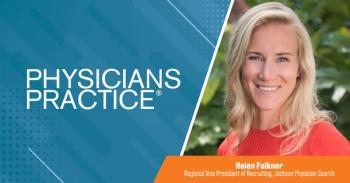
Empowering Patients with Health Navigators
The combination of high-tech and “high-touch” patient advisors can not only improve health outcomes, but produce a return on investment.
The evolution of sophisticated technology has the opportunity to offer many benefits to both care providers and patients, especially when it comes to population health. But this high-tech capability can be daunting and confusing for some people, especially those who are older, have chronic conditions, or encounter social determinants such as socioeconomic conditions or logistical issues in regard to health. However, a “high-tech, high-touch” care approach using navigators can help empower patients.
“There is a lot of patient-focused software out there, but it can be difficult for patients to adopt this for themselves. This approach is actually patient-centric,” said Merrily Evdokimoff, RN, PhD, an adjunct professor of community health nursing at the University of Massachusetts-Boston and a consultant for IT/ software provider Kinergy Health. Evdokimoff presented a session on patient activation using technology-supported navigators at the Healthcare Information and Management Systems Society (HIMSS) conference in Las Vegas.
The high-tech component of this model includes a HIPAA-compliant extension to the existing EHR to facilitate communication with patients, and the high-touch component consists of trained patient advisors – “navigators” – who address non-clinical issues. “I love the name navigators, because that’s really what this is about. This is about helping patients get through and understand the system,” Evdokimoff said. Navigators work particularly well in certified home health agencies, physicians’ offices with chronic care management, call centers and in hospital case management.
A navigator’s role is multi-faceted and adaptable, depending on a coordinating organization’s and patient’s needs. Tasks may include identifying community resources, helping address chronic illness as a lifestyle disease, recognizing warning signs that may require escalating care for the patient with a physician and communicating with a patient’s family members.
Additionally, navigators work with patients to set realistic, achievable goals as they relate to health and wellness. “We find out what the patient wants to do,” Evdokimoff said. A 2013 study of 230 patients who received telephone follow-up with a care guide in a weight management program found that they achieved more goals than usual care patients (82.6 percent versus 79.1 percent), and they met more individual goals, which resulted in higher patient satisfaction, healthier habits and an improved quality of life.
Though the relationship is health-centric, customer service is at the forefront of this model, especially because much of the work can be done over the phone. One of the most important aspects of navigators is the ability to address potential problems right away. “The navigator is able to get immediate patient satisfaction feedback, which helps identify things before they are escalated and patients are unhappy,” she said.
Some practices or health systems may be hesitant to institute a high-tech, high-touch program due to cost concerns, but, Evdokimoff said, the return on investment is high. A study by The Center for Health Affairs & Accenture showed there are more kept appointments, and fewer cancelled or no-show appointments when navigators are utilized. When used in hospital case management, patients are better able to understand medication schedules and discharge instructions, which results in a lower re-hospitalization rate. “Intervention, especially shortly after discharge, can be very significant,” she said. And, for home care, “prolonged engagement with the patient over a long period of time results in a very small cost,” Evdokimoff added.
Newsletter
Optimize your practice with the Physicians Practice newsletter, offering management pearls, leadership tips, and business strategies tailored for practice administrators and physicians of any specialty.








